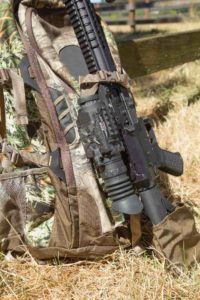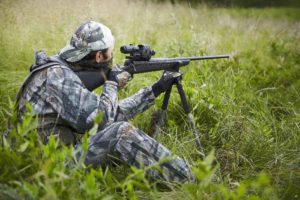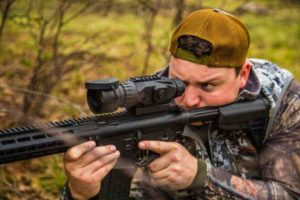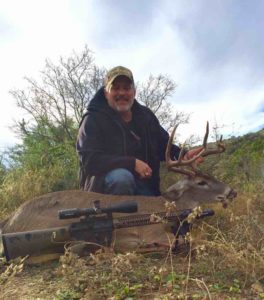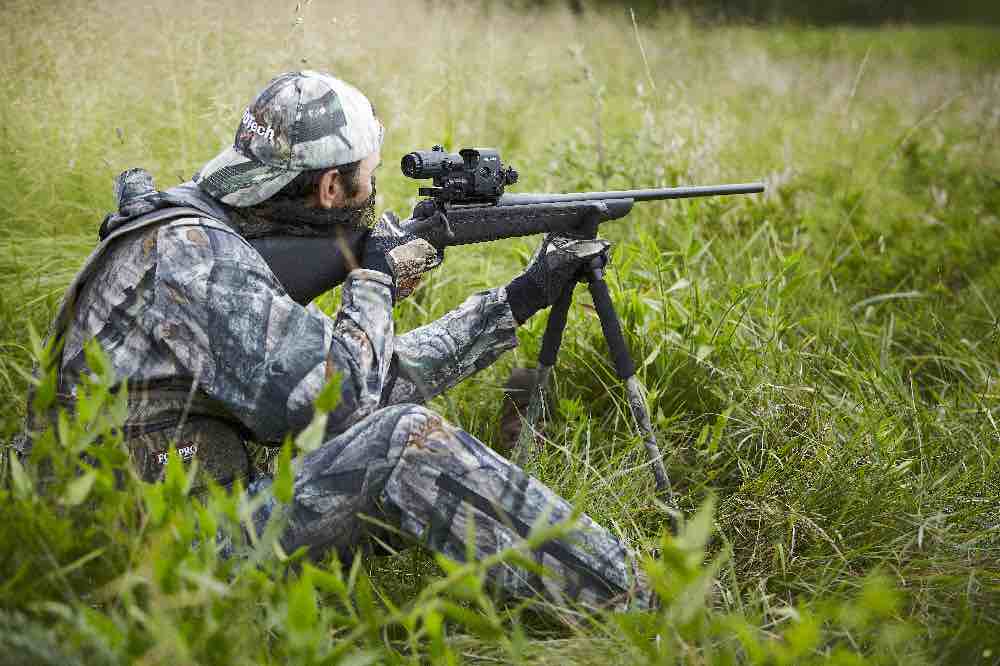
I’ve got some expert advice on choosing the perfect long-range hunting rifle scope.
If you’re a hunter like me, you know that finding the ideal scope can make all the difference in your shooting experience. With so many options out there, it can be overwhelming. But don’t worry, I’ve got you covered.
In this article, we’ll explore the key factors to consider, from magnification to reticle options, turret adjustments to durability. Get ready to take your long-range shooting skills to the next level.
Let’s dive in!
Factors to Consider When Choosing a Long-Range Hunting Rifle Scope
When choosing a long-range hunting rifle scope, I consider factors such as magnification, reticle type, and durability. These factors are crucial in ensuring a successful and enjoyable hunting experience.
Magnification plays a significant role in long-range hunting. It determines how close you can see your target and allows for precise aiming. A scope with adjustable magnification is ideal, as it offers versatility in different hunting situations. Whether you’re hunting in dense forests or open fields, being able to zoom in on your target is essential.
[Catch our article Why Optimal Long-Range Hunting Scopes Are Essential.]
The reticle type is another important factor to consider. There are various types of reticles available, such as duplex, mil-dot, and BDC. Each has its own advantages and is designed for specific purposes. For long-range hunting, a reticle with accurate holdover points and windage marks can greatly enhance your shooting accuracy.
Durability is a non-negotiable factor for any hunting gear, and a rifle scope is no exception. You need a scope that can withstand rugged outdoor conditions, including extreme weather and rough handling. Look for scopes made from durable materials like aircraft-grade aluminum and equipped with weatherproof seals to ensure longevity.
Considering these factors will help you choose the ideal long-range hunting rifle scope that meets your specific needs. Remember, freedom in hunting is about having the right tools to enhance your skills and enjoy the great outdoors.
Understanding Magnification and Objective Lens Size
I prefer a long-range hunting rifle scope with adjustable magnification and an appropriate objective lens size for optimal target visibility.
When it comes to magnification, it’s important to strike a balance between too much and too little. Too high of a magnification can make it difficult to acquire and track targets quickly, especially in a fast-paced hunting situation. On the other hand, too low of a magnification may not provide the necessary clarity and detail required for long-range shooting. It’s crucial to choose a scope that allows for adjustable magnification, so you can adapt to different hunting scenarios.
Objective lens size is another important factor to consider. The objective lens is located at the front of the scope and determines the amount of light that enters the scope. A larger objective lens allows for more light transmission, resulting in a brighter and clearer image. This is particularly beneficial in low-light conditions, such as dawn or dusk hunting. However, larger objective lenses also tend to be heavier and bulkier, which may not be ideal for hunters who prioritize mobility and ease of use.
Ultimately, the ideal magnification and objective lens size will depend on your specific hunting needs and preferences. It’s recommended to test out different scopes and consult with experienced hunters to find the perfect combination that suits your style of hunting. Remember, the goal is to have a scope that provides optimal target visibility, ensuring a successful and enjoyable hunting experience.
Evaluating Reticle Options for Long-Range Shooting
The key to evaluating reticle options for long-range shooting is to consider both the type of reticle and the features it offers. When it comes to choosing the right reticle for your long-range hunting rifle scope, there are a few factors to consider.
One of the first things to look at is the type of reticle. There are several options available, including duplex reticles, mil-dot reticles, and BDC (Bullet Drop Compensation) reticles. Each type has its own advantages and disadvantages, so it’s important to choose one that suits your shooting style and preferences.
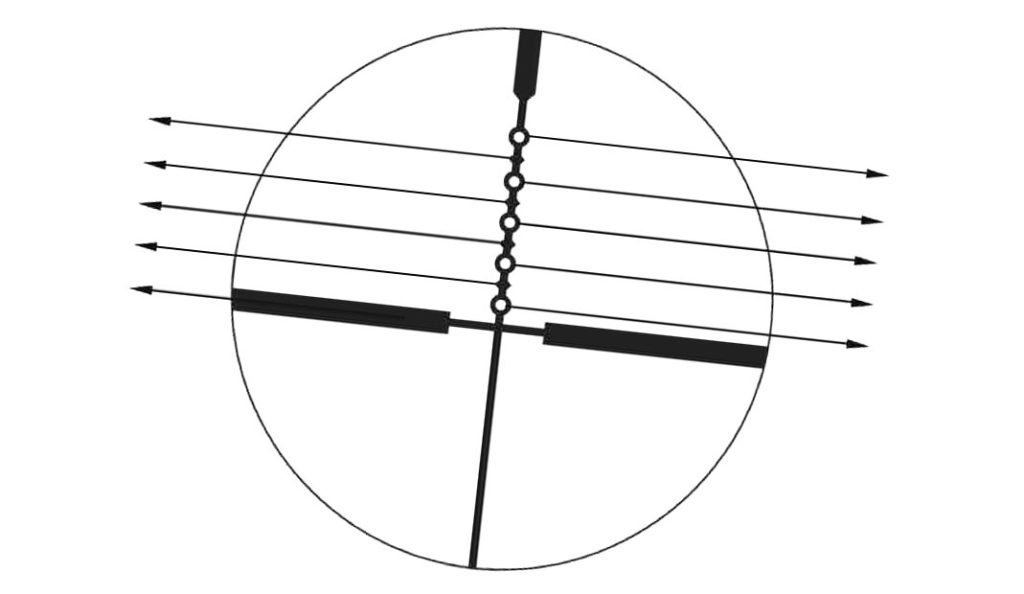
Once you’ve decided on the type of reticle, it’s time to consider the features it offers. Some reticles come with additional markings or hash marks, which can be used for windage and elevation adjustments. Others may have illuminated reticles, which can be particularly useful in low-light conditions. It’s also worth looking for a reticle that offers clear and precise aiming points, as well as easy-to-read subtensions.
In addition to the type and features of the reticle, it’s important to consider the size and thickness of the reticle’s lines. Thinner lines can provide more precise aiming, but they can also be harder to see in certain lighting conditions. Thicker lines, on the other hand, can be easier to see but may cover up too much of the target at longer distances.
Ultimately, the best reticle for long-range shooting will depend on your individual needs and preferences. Take the time to evaluate the different options available and choose one that will help you achieve accuracy and success in your long-range hunts.
Exploring Turret Adjustments and Tracking Accuracy
I found that exploring the turret adjustments and tracking accuracy of a long-range hunting rifle scope is crucial for achieving precise and consistent shots. When it comes to long-range shooting, every little adjustment matters.
Here are four key reasons why understanding turret adjustments and tracking accuracy is essential:
- Improved Precision: Accurate turret adjustments allow you to fine-tune your shots, ensuring that each bullet lands exactly where you want it. This level of precision is crucial for hitting targets at great distances and maximizing your hunting success.
- Consistency: A rifle scope with reliable tracking accuracy ensures that your adjustments hold true from shot to shot. Consistency is vital for developing muscle memory and maintaining your shooting technique, resulting in more accurate and repeatable performance.
- Long-Range Shots: When engaging targets at extended ranges, having a scope with precise turret adjustments and tracking accuracy becomes even more critical. It allows you to compensate for bullet drop, wind drift, and other environmental factors, enabling you to make accurate shots at extreme distances.
- Flexibility: Adjustable turrets provide the freedom to adapt to different shooting scenarios. Whether you’re hunting in open fields, dense forests, or steep mountainous terrains, being able to make precise adjustments on the fly allows you to quickly adapt to changing conditions and take the perfect shot.
Durability and Weather Resistance: Essential Features for Long-Range Hunting Scopes
One important aspect to consider when choosing a long-range hunting rifle scope is the durability and weather resistance, as these features are essential for withstanding harsh conditions and ensuring reliable performance.
[Do not miss How Do Rifle Scopes Work?]
When out in the field, hunters often face challenging environments that can put their equipment to the test. Whether it’s extreme temperatures, heavy rain, or dusty conditions, a durable and weather-resistant scope is crucial for maintaining optimal functionality.
A durable scope is built to withstand the rigors of hunting, including accidental drops, bumps, and rough handling. It should be constructed with high-quality materials that can withstand impact without compromising its performance. Look for scopes with rugged exteriors, reinforced housing, and scratch-resistant lenses to ensure longevity.
Additionally, weather resistance is vital for a long-range hunting scope. It should be able to handle moisture, fog, and dust without affecting its clarity or functionality. Optics with nitrogen or argon purging and O-ring seals are designed to be waterproof, fog-proof, and dustproof. This ensures that the scope remains clear and free from internal condensation, even in humid or wet conditions.
Conclusion
In conclusion, choosing the ideal long-range hunting rifle scope requires careful consideration of several factors.
Understanding magnification and objective lens size, evaluating reticle options, and exploring turret adjustments are all essential in making the right choice.
Additionally, durability and weather resistance are crucial features for a long-range hunting scope.
By taking these factors into account, hunters can ensure they’ve a scope that meets their specific needs and enhances their long-range shooting experience.
